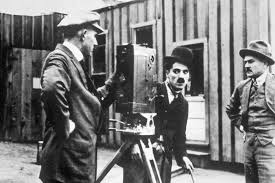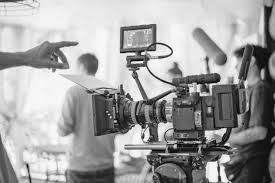
When we think about old, silent films, we’re likely to picture the choppy, fast-paced movements of Charlie Chaplin or Buster Keaton, or perhaps the newsreel footage of Babe Ruth hitting a home run and seemingly zipping around the bases at 40 miles per hour. As talented as these individuals were, they weren’t capable of moving at speeds far beyond the range of normal people. So why do they appear that way on film?
 Film Only Provides the Illusion of Movement
Film Only Provides the Illusion of Movement
To answer this question, we need to go back to some of the basics of filmmaking. Throughout the history of cinema, movie cameras have never been able to faithfully capture real-life movement. Rather, they record a series of still images in rapid succession and replay them at speeds fast enough to trick the human mind into perceiving movement.
The number of individual images (or frames) displayed in one second of film is known as the frame rate, measured in frames per second (fps). Thomas Edison, who patented (but didn’t invent) the movie camera, noted that film needed to be shown at a speed of at least 46 fps to provide the illusion of movement. But in the early days of cinema, this proved too pricey to be practical, and some filmmakers found that the visual illusion could be sustained — and expensive celluloid film stock conserved — with frame rates closer to 16 fps, or even as low as 12 fps. While this speed was considered fast enough for a movie camera of that era, it is noticeably slower than the 24-fps rate that later became commonplace for both filming and projecting. And when old footage filmed at 16 fps or lower is accelerated for replaying at modern speeds, it will make the objects on screen move noticeably faster.
Some Films Were Sped Up on Purpose
In the 1920s, the major Hollywood studios largely used the Bell and Howell 2709 movie camera. This model featured a hand crank that churned through half a foot of film with each revolution. As such, turning the handle twice per second equated to a shooting speed of 16 fps, which became the general standard for the era.
That said, many silent film directors deliberately ordered sequences shot at slower or faster speeds — “undercranked” or “overcranked” — for effect. A scene filmed at a slower speed (i.e. 16 fps) and then projected at a faster speed (i.e. 24 fps) will appear sped up, while the effect of slow motion comes when something is filmed at an even faster speed and then slowed to a standard speed for projection.
Studios often provided theaters with specific instructions for projection speeds that were higher than the filmed speed to make the motion look faster than normal, generally for comedic purposes or action sequences. And yet many of these theaters projected the films at even higher speeds in order to cram more showings and boost the number of paying customers in a single day. The end result of a film shot at, say, somewhere between 14 and 18 fps and projected at 22 fps or faster is the sped-up motion typical of movies from this era.
 Sound Changed the Standard for Speed
Sound Changed the Standard for Speed
Though Edison and other innovators had previously attempted to match sound to moving pictures with limited success, the successful rollout of the Vitaphone with the Warner Bros. features Don Juan (1926) and The Jazz Singer (1927) showed that “talkies” were here to stay.
The Vitaphone solved the problem of sound and picture synchronization with a mechanical turntable that simultaneously powered a phonograph record alongside a film projector. A 16-inch record played at a speed of 33.3 rotations per minute (rpm) delivered 11 minutes of sound, matching the 11 minutes of visuals produced by 1,000 feet of film played at 24 fps. As sound ushered in a new era of cinema, Hollywood studios sought to standardize film speeds to preserve the uniform quality of their expensive productions, and 24 fps became the standard frame rate across the industry (notably slower than Edison’s original recommendation of 46 fps).
The reason for this exact number varies: Some sources note the depreciation of audio fidelity at lower speeds, or the fact that 24 is divisible by several numbers, enabling cinematographers to easily mark off smaller increments of film. Yet it’s likely that 24 fps was accepted throughout the industry largely because of Vitaphone’s initial success at that number.
The Filming Speed Today
Naturally, the equipment that once was considered cutting edge in Hollywood has long since been replaced by new and better creations. The all-important Vitaphone quickly became obsolete with the emergence of sound-on-film technology in the 1930s, and the Bell and Howell 2709 camera fell out of production by 1958. Even the longtime staple of celluloid film was largely pushed aside by major studios with the rise of digital movies in the 2000s.
Yet the old-fashioned 24 fps film rate remains standard across the industry, despite the ability of modern cameras to shoot at far greater speeds. One major reason for this is simply that audiences have become accustomed to the distinct look of movies shot at that speed (as evidenced by the critical uproar over the visuals from the 48-fps version of 2011’s The Hobbit).
This means we’ll likely continue watching movies filmed at this standard for the foreseeable future. And in the meantime, we can also enjoy the old clips of Charlie, Buster, and other luminaries of the silent era, the jerky movements and clumsy intertitles serving as a reminder of how far this beloved form of storytelling has come over the past century.